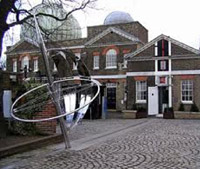World Time creation: a coincidental predetermination
Two industrial inventions (railroad and telegraph) have made a revolutionary change in our "timing" system inevitable. Travelling by railroad has arosed the question about time for the travellers. How were they supposed to set the watch? To local time at the departure point, or according to time at the destination station? Railroads introduced the first tables of uniform time for railway stations in the mid-19th century. Haos was brewing. In 1880 Geneva clock tower had 3 clocks: one for local time, one with French time, and last with Swiss railway time. Pocket watches had up to 6 dials with different times!

In 1876 Canadian railway engineer Sandford Fleming has missed his train due to printing error in his travel guide. Instead of printed 5:35 PM the real depature time was 5:35 AM. The result was Sanford's essay "Terrestial Time" with description of worldwide system of time. He suggested to count hours from 1 to 24 and to divide the whole world in 24 time zones of 15° geographic longitude each. Each of 24 times was to differ from the nearby zone by one hour.
The main Fleming's goal, however, was to establish single world time. This idea was not supported. It may be done, if we choose some external reference standard. As far, as the Earth is moving around the Sun constantly, such reference may be Sun's longitude with required accuracy.
To implement such timing system we need to choose prime meridian for starting point. The lack of uniform meridian was resolved only in 1884 by the representatives of 25 countries convened in Washington for "International Prime Meridian Conference". At that moment there were several pretenders: Greenwich, Paris, Cadiz and Naples. Finally, observatory in Greenwich was choosen for prime meridian. The main merit of this choice belonged to John Flamsteed, who had been the first director of Greenwich observatory. His studies proved the constant Earth's rotation speed and made possible to publish tables of longitudes. In XVIII century chronometers were widely used for determining geographic longitude, and about 70% of all longitude tables used by sailor at the end of the century were based on Greenwich meridian. But only in 1928 an agreement was reached to use Greenwich Mean Time (GMT) as World Time. Since 1972 GMT was changed to Universal Time Coordinated Time (UTC). It is still based on the Greenwich, but UTC is not determined by astronomers any more, instead, it is generated by atomic clocks and adjusted whenever necessary.
You can visit an official GMT site from here
There are countries with respectful attitude towards local time (Australia and some Asian countries). In such countries mean zonal time is as close to capital's local sun time as possible. For examlpe, time in Nepal is GMT + 05:45. Kathmandu is located at 85.32° East longitude